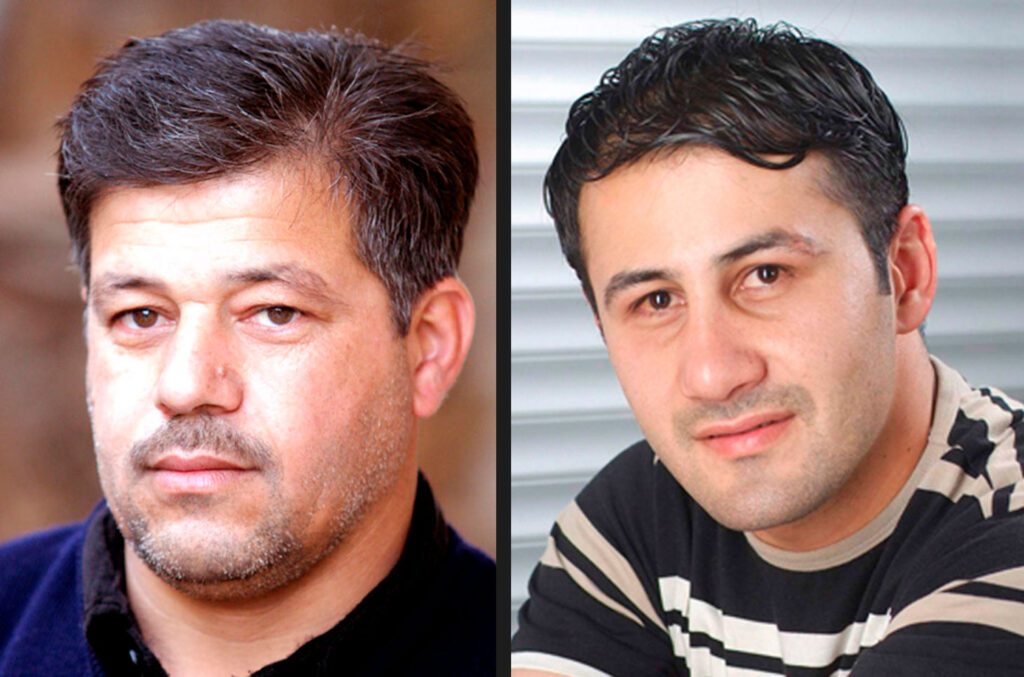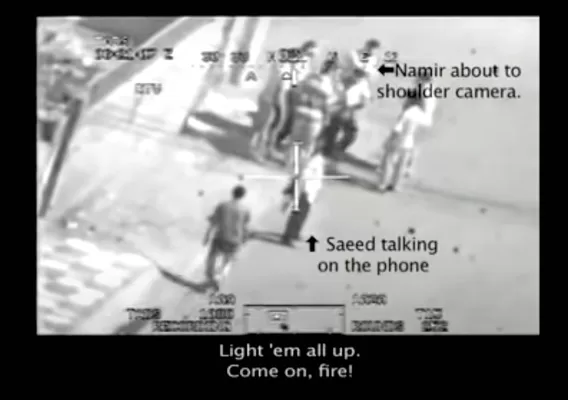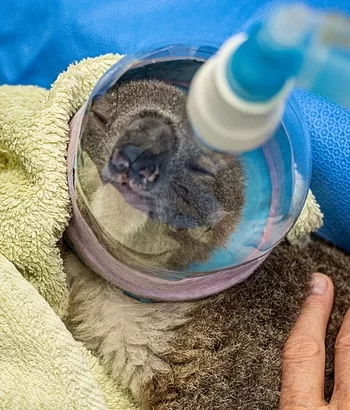On this page: Wikileaks released the Collateral Murder video to a fanfare press conference in 2010.
Bradley Manning’s speech rationalising his actions in releasing the video is worth reading.
President Barrack Obama downplayed the leak, saying the documents actually support his strategy in Iraq and “these documents don’t reveal any issues that haven’t already informed our public debate on Afghanistan”
Wikileaks release Collateral Murder
WikiLeaks came to international attention in 2010 when it published a series of leaks provided by U.S. Army intelligence analyst Chelsea Manning.
These leaks included the Baghdad airstrike Collateral Murder video (April 2010), the Afghanistan war logs (July 2010), the Iraq war logs (October 2010), and Cablegate (November 2010). After the 2010 leaks, the United States government launched a criminal investigation into WikiLeaks.
Video footage from a U.S. Apache helicopter in 2007 leaked by U.S. Army intelligence analyst and whistleblower Bradley Manning to Wikileaks.
The video shows Reuters journalist Namir Noor-Eldeen, driver Saeed Chmagh, and several others as the Apache shoots and kills them in a public square in Eastern Baghdad after they are apparently assumed to be insurgents. After the initial shooting, an unarmed group of adults and children in a minivan arrives on the scene and attempts to transport the wounded. They are fired upon as well.
The official statement on this incident initially listed all adults as insurgents and claimed the US military did not know how the deaths occurred.

Reuters driver Saeed Chmagh (left) and photographer Namir Noor-Eldeen (right) were shot dead by a U.S. Apache helicopter on July 12, 2007. REUTERS/Handout
Private First Class Bradley Manning’s speech to the military court
Freedom of the Press Foundation published the full, previously unreleased audio recording of Private First Class Bradley Manning’s speech to the military court in Ft. Meade about his motivations for leaking over 700,000 government documents to WikiLeaks.
Manning explained to the military court how and why he gave the Apache helicopter video, Afghanistan and Iraq Wars Logs, and the State Department Diplomatic Cables to WikiLeaks. Manning explains his motives, noting how he believed the documents showed deep wrongdoing by the government and how he hoped that the release would “spark a domestic debate on the role of the military and our foreign policy in general as it related to Iraq and Afghanistan.” In conjunction with the statement, Private First Class Manning also pleaded guilty to 10 of the 22 charges against him.
Transcript
During the mid-February 2010 time frame the 2nd Brigade Combat Team, 10th Mountain Division targeting analysts, then Specialist Jihrleah W. Showman discussed a video that Ms. Showman had found on the T-drive.
The video depicted several individuals being engaged by an aerial weapons team. At first I did not consider the video very special, as I have viewed countless other war porn type videos depicting combat. However, the recording of audio comments by the aerial weapons team crew and the second engagement in the video of an unarmed bongo truck troubled me.
As Showman and a few other analysts and officers in the T-SCIF commented on the video and debated whether the crew violated the rules of engagement or ROE in the second engagement, I shied away from this debate, instead conducting some research on the event. I wanted to learn what happened and whether there was any background to the events of the day that the event occurred, 12 July 2007.
Using Google I searched for the event by its date by its general location. I found several new accounts involving two Reuters employees who were killed during the aerial weapon team engagement. Another story explained that Reuters had requested for a copy of the video under the Freedom of Information Act or FOIA. Reuters wanted to view the video in order to understand what had happened and to improve their safety practices in combat zones. A spokesperson for Reuters was quoted saying that the video might help avoid the reoccurrence of the tragedy and believed there was a compelling need for the immediate release of the video.
Despite the submission of the FOIA request, the news account explained that CENTCOM replied to Reuters stating that they could not give a time frame for considering a FOIA request and that the video might no longer exist. Another story I found written a year later said that even though Reuters was still pursuing their request. They still did not receive a formal response or written determination in accordance with FOIA.
The fact neither CENTCOM or Multi National Forces Iraq or MNF-I would not voluntarily release the video troubled me further. It was clear to me that the event happened because the aerial weapons team mistakenly identified Reuters employees as a potential threat and that the people in the bongo truck were merely attempting to assist the wounded. The people in the van were not a threat but merely “good samaritans”. The most alarming aspect of the video to me, however, was the seemly delightful bloodlust they appeared to have.
The dehumanized the individuals they were engaging and seemed to not value human life by referring to them as quote “dead bastards” unquote and congratulating each other on the ability to kill in large numbers. At one point in the video there is an individual on the ground attempting to crawl to safety. The individual is seriously wounded. Instead of calling for medical attention to the location, one of the aerial weapons team crew members verbally asks for the wounded person to pick up a weapon so that he can have a reason to engage. For me, this seems similar to a child torturing ants with a magnifying glass.
While saddened by the aerial weapons team crew’s lack of concern about human life, I was disturbed by the response of the discovery of injured children at the scene. In the video, you can see that the bongo truck driving up to assist the wounded individual. In response the aerial weapons team crew – as soon as the individuals are a threat, they repeatedly request for authorization to fire on the bongo truck and once granted they engage the vehicle at least six times.
Shortly after the second engagement, a mechanized infantry unit arrives at the scene. Within minutes, the aerial weapons team crew learns that children were in the van and despite the injuries the crew exhibits no remorse. Instead, they downplay the significance of their actions, saying quote “Well, it’s their fault for bringing their kids into a battle” unquote.
The aerial weapons team crew members sound like they lack sympathy for the children or the parents. Later in a particularly disturbing manner, the aerial weapons team verbalizes enjoyment at the sight of one of the ground vehicles driving over a body – or one of the bodies. As I continued my research, I found an article discussing the book, The Good Soldiers, written by Washington Post writer David Finkel.
In Mr. Finkel book, he writes about the aerial weapons team attack. As, I read an online excerpt in Google Books, I followed Mr. Finkel’s account of the event belonging to the video. I quickly realize that Mr. Finkel was quoting, I feel in verbatim, the audio communications of the aerial weapons team crew.
It is clear to me that Mr. Finkel obtained access and a copy of the video during his tenue as an embedded journalist. I was aghast at Mr. Finkel’s portrayal of the incident. Reading his account, one would believe the engagement was somehow justified as “payback” for an earlier attack that lead to the death of a soldier. Mr. Finkel ends his account by discussing how a soldier finds an individual still alive from the attack. He writes that the soldier finds him and sees him gesture with his two forefingers together, a common method in the Middle East to communicate that they are friendly. However, instead of assisting him, the soldier makes an obscene gesture extending his middle finger.
The individual apparently dies shortly thereafter. Reading this, I can only think of how this person was simply trying to help others, and then he quickly finds he needs help as well. To make matter worse, in the last moments of his life, he continues to express his friendly gesture – only to find himself receiving this well known gesture of unfriendliness. For me it’s all a big mess, and I am left wondering what these things mean, and how it all fits together. It burdens me emotionally.
I saved a copy of the video on my workstation. I searched for and found the rules of engagement, the rules of engagement annexes, and a flow chart from the 2007 time period – as well as an unclassified Rules of Engagement smart card from 2006. On 15 February 2010 I burned these documents onto a CD-RW, the same time I burned the 10 Reykjavik 13 cable onto a CD-RW. At the time, I placed the video and rules for engagement information onto my personal laptop in my CHU. I planned to keep this information there until I redeployed in Summer 2010. I planned on providing this to the Reuters office in London to assist them in preventing events such as this in the future.
However, after the WLO published 10 Reykjavik 13 I altered my plans. I decided to provide the video and the rules of engagement to them so that Reuters would have this information before I re-deployed from Iraq. On about 21 February 2010, I described above, I used the WLO submission form and uploaded the documents. The WLO released the video on 5 April 2010. After the release, I was concern about the impact of the video and how it would been received by the general public.
I hoped that the public would be as alarmed as me about the conduct of the aerial weapons team crew members. I wanted the American public to know that not everyone in Iraq and Afghanistan are targets that needed to be neutralized, but rather people who were struggling to live in the pressure cooker environment of what we call asymmetric warfare. After the release I was encouraged by the response in the media and general public, who observed the aerial weapons team video. As I hoped, others were just as troubled – if not more troubled that me by what they saw.
Freedom of the Press Foundation hoped this recording will shed light on one of the most secret court trials in recent history, in which the government is putting on trial a concerned government employee whose only stated goal was to bring attention to what he viewed as serious governmental misconduct and criminal activity.
The information provided by Manning has uncovered stories of wrongdoing by the United States, as well as by leaders and politicians around the world. The cables were reportedly one of the catalysts that led to the Arab Spring and sped up the end of the Iraq War.
To this day, the information provided by Manning is used every day by journalists and historians in major publications are the world to enlighten and inform the public, both in the United States and around the world.
In a time when the extent and reach of U.S. government secrecy is unprecedented, and there are credible reports that the government has abused its secrecy and classification systems to cover up numerous illegal and unconstitutional activities, Manning’s actions should be seen as an overdue sliver of sunlight into an overly secret system rather than as a basis for a prosecution seeking decades of imprisonment.
Presidential Remarks on WikiLeaks Release of Classified Documents
JULY 27, 2010 – President Obama spoke about the WikiLeaks release of more than 91,000 classified documents on the war in Afghanistan. In his remarks he said the documents actually support his strategy in that country – and “these documents don’t reveal any issues that haven’t already informed our public debate on Afghanistan“
President Barack Obama
I also urged the House leaders to pass the necessary funding to support our efforts in Afghanistan and Pakistan. I know much has been written about this in recent days as a result of the substantial leak of documents from Afghanistan covering a period from 2004 to 2009.
While I’m concerned about the disclosure of sensitive information from the battlefield that could potentially jeopardize individuals or operations, the fact is these documents don’t reveal any issues that haven’t already informed our public debate on Afghanistan; indeed, they point to the same challenges that led me to conduct an extensive review of our policy last fall.
So let me underscore what I’ve said many times: For seven years, we failed to implement a strategy adequate to the challenge in this region, the region from which the 9/11 attacks were waged and other attacks against the United States and our friends and allies have been planned.
That’s why we’ve substantially increased our commitment there, insisted upon greater accountability from our partners in Afghanistan and Pakistan, developed a new strategy that can work, and put in place a team, including one of our finest generals, to execute that plan. Now we have to see that strategy through.
And as I told the leaders, I hope the House will act today to join the Senate, which voted unanimously in favor of this funding, to ensure that our troops have the resources they need and that we’re able to do what’s necessary for our national security.
President Barack Obama
This background to Julian Assange’s story is part of our investigation into the death of Reuters cameramen in Iraq and the Wikileaks Collateral Murder leak. Our ten page investigation into the death of Reuters camera crew in Iraq.
1 The trial of Julian Assange exposes US Rules of Engagement
2 US Military killed two Reuters photographers in Iraq
3 The fix is in: Military investigation into deaths of Reuters staff in Iraq
4 Generals Brookes & Fox meet the Reuters editors
5 Military ignored FOI requests for video of deaths
6 Rules of Engagement between military & civilians
7 Assange: WikiLeaks release Collateral Murder video
8 Definitions, Resources, Transcripts, Apache details
9 Who, what, when and why of the Assange case
10 Wikileaks Collateral Murder video aftermath. Where are they now?
A quick update on the Julian Assange story







